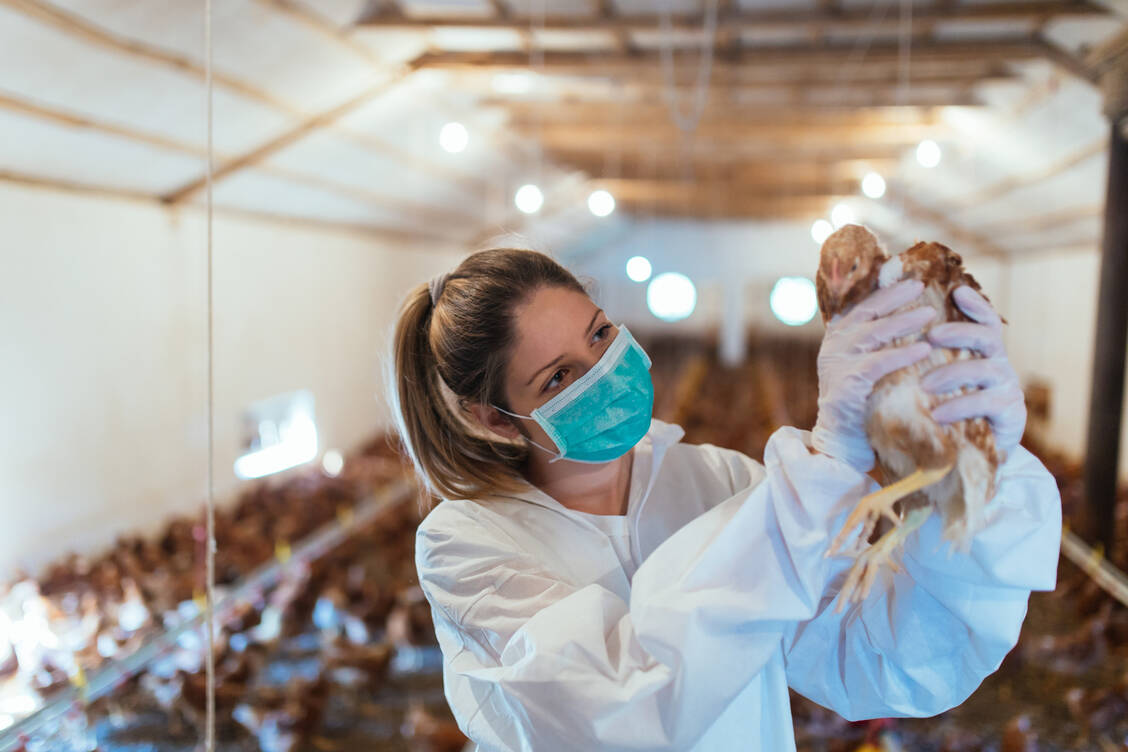Risk of a pandemic: How dangerous is avian influenza?



Humans can become infected with avian influenza viruses through close contact with sick poultry. / © Adobe Stock/hedgehog94
The H5N1 avian influenza virus is currently spreading rapidly among birds in Germany. Many people are wondering whether this poses a risk of another pandemic. Virologist Professor Dr. Klaus Stöhr explained in an interview with the "Mitteldeutsche Zeitung": "In principle, the H5N1 virus has all the characteristics necessary to trigger a pandemic."
The former head of the World Health Organization's (WHO) influenza program therefore advocates taking precautions. "Pandemics have always existed; good pandemic planning is the best preparation," said Stöhr. According to him, vaccines should be developed, pandemic plans worldwide should be updated, and the monitoring of animal populations should be improved.
The widespread prevalence of the highly pathogenic avian influenza virus gives the pathogen "infinitely more opportunities for transmission and adaptation to humans." This danger should not be underestimated, Stöhr warned.
Other experts, speaking to the Science Media Center Germany, offer a different assessment of the situation, but also urge caution. Professor Dr. Timm Harder of the Friedrich Loeffler Institute, Greifswald-Insel Riems, emphasizes that poultry flocks in Germany are currently most at risk from the pathogen, but also carnivorous mammals such as foxes. Furthermore, livestock can become infected in the vicinity of infected poultry or wild birds.
In the US, this led to a large outbreak of H5N1 infections in dairy cows; in the UK, a sheep was confirmed to be infected in 2024, and in Italy, a herd of pigs kept together with H5N1-infected chickens was infected in 2023. Monitoring of these farm animals is currently inadequate, said Harder. "Systematic H5N1 monitoring studies of ruminant and pig herds do not yet exist in Europe."
Humans could, in principle, also become infected with the avian influenza virus. The viruses are considered zoonotic, meaning they can be transmitted from animals to humans. Different virus strains and lineages have varying degrees of zoonotic potential, according to Harder. "The H5N1 viruses of clade 2, 3, 4, 4b, which are dominant in Europe and the USA, are assessed as having low zoonotic potential by the ECDC, the European Centre for Disease Prevention and Control."
Professor Dr. Florian Krammer of the Icahn School of Medicine at Mount Sinai in New York City also emphasizes this point. However, he notes that the high number of infections in animals increases the likelihood of zoonotic infections. And a high number of infections in mammals carries the risk that the avian viruses will adapt more readily to mammalian cells – and thus also to humans.
Coinfections in humans can be particularly problematic, meaning when individuals are simultaneously infected with a human influenza virus and an avian influenza virus. This could lead to the emergence of new influenza variants through the exchange of genetic material (recombination), says Krammer. "These newly formed viruses then potentially have the potential to trigger a new pandemic." In Austria and some other European countries, H5 vaccines are already available for groups of people at increased risk of avian influenza infection. "However, these are not available in Germany."

pharmazeutische-zeitung




